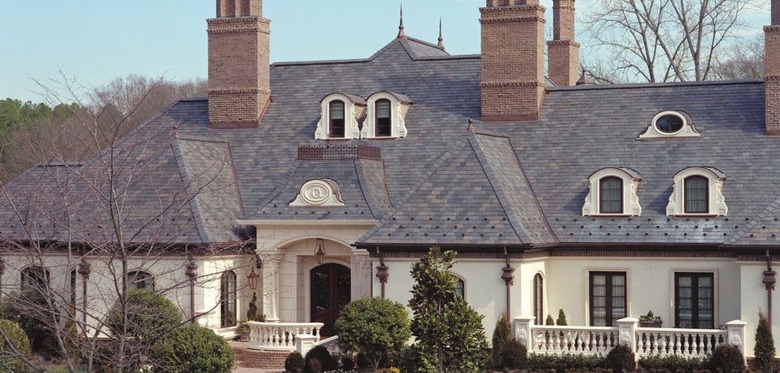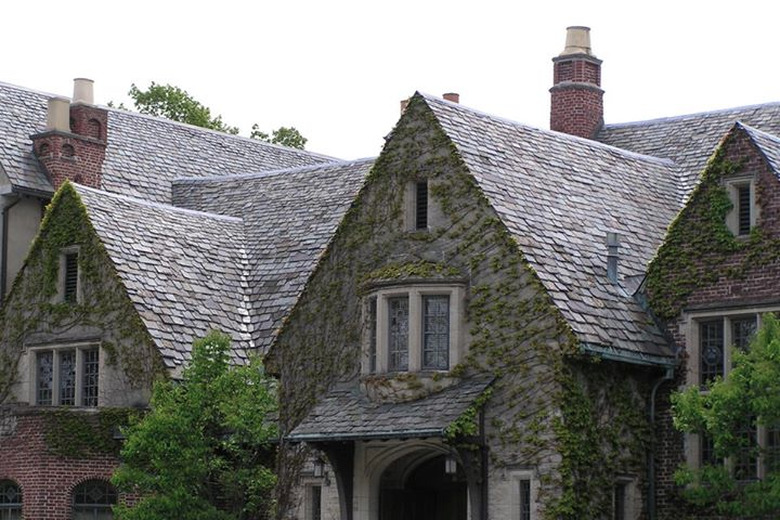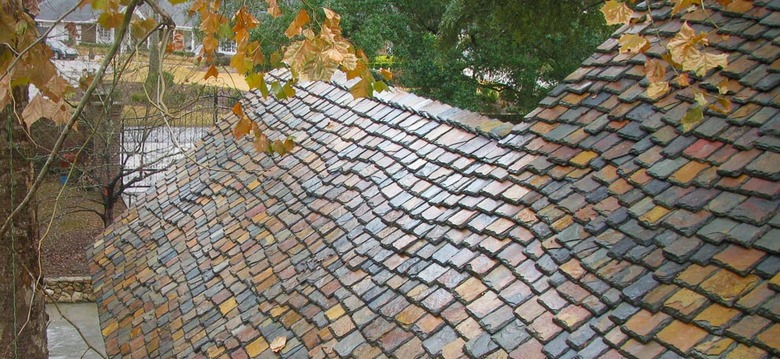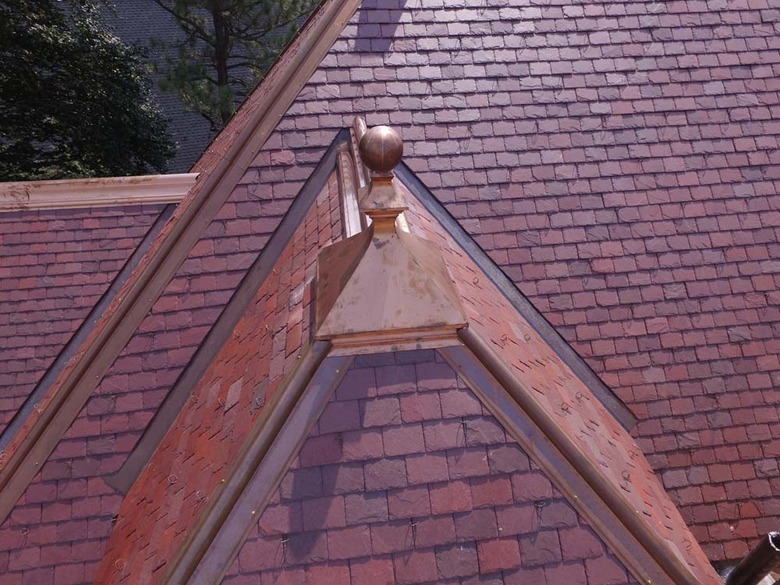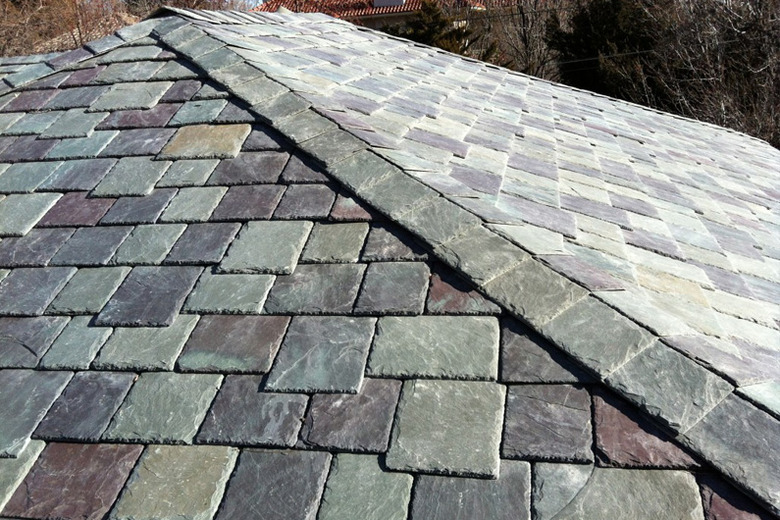What You Need To Know About Slate And Stone Roofing
Slate is natural metamorphic stone, transformed from sedimentary shale by heat and pressure into a harder, more impervious material. It's quarried at locations around the world and split and shaped by hand. As a roofing material, slate is unsurpassed in its durability and longevity and some slate tile producers guarantee their product for as much as 100 years. Slate is also unequalled in its natural beauty, a beauty seemingly immune to the effects of time and the elements.
A Slate Roof Conveys Tradition and Prestige
A Slate Roof Conveys Tradition and Prestige
Most often you'll find slate roofing on prestige homes and buildings and on historic structures. In new construction, the principal reason to specify slate roofing is for its aesthetic appeal. Slate's unparalleled lifespan as a roofing material is an attractive benefit, of course, but claims that it increases home value or that, as an investment, it yields you a measurable return over the life of the roof are frequently overstated. Measuring enhanced home value would require comparison with a similar home in the same neighborhood at the same time but lacking a slate roof. As for return on investment, while it is true that with its potential lifespan of 150 or even 200 years, slate might outlast more ordinary roofing materials by a factor of five, few homeowners will fully enjoy the saving represented by such durability.
When It's Good, a Slate Roof is Excellent
When It's Good, a Slate Roof is Excellent
Buying a house that already has a slate roof can mean you will never have to worry about roof maintenance, provided the slate is of a high grade and was installed correctly over proper underlayment. Slate quality is important. Not all slate is equivalent, and some softer varieties of slate—notably the lower-grade slate tiles from Brazil or China—will show visible deterioration much earlier. No matter the grade of the slate, improperly installed slate roofing is an expensive deficit, not a benefit. The greater expense of any slate roof is in the installation cost and the only remedy for a faulty slate roof is to remove and reinstall it. Before you buy, it is be wise to have an experienced professional slater inspect the quality and condition of the roof.
Tip
Because of slate's rich distinctive beauty, many manufacturers of synthetic or composite roofing materials make products that attempt to simulate slate. While the uniformity of the manufactured products simplifies their installation and even makes for a perfectly satisfactory roof treatment, none of them compares with slate for fade-resistance and durability.
Slate's Long Life Comes With Unique Requirements
Slate's Long Life Comes With Unique Requirements
The longevity of a slate roof is only as good as its support structure. The usual decking to which slate tiles are nailed is solid wood, 3/4 to 1 inch thick. Other commonly used modern building materials that depend on glue for their integrity, such as laminates and wafer board, will deteriorate long before the slate does. Likewise, the flashing that is used must have an equivalent lifespan to the slate. Typically, that means copper or stainless steel. Over the course of 100 years or more, ordinary steel flashing will rust away.
Slate tiles are nailed, using nails made of copper, stainless steel or hot-dipped galvanized steel, in staggered courses, with each successive course adequately overlapping the butt joints of the tiles below. Vertically,, each course not only overlaps the upper portion of the course below, it must also overlap by at least 3inches. That overlap two courses below is called the headgap. A headgap allowance of less than three inches can result in a leaky roof.
Tip
Although slate is the most common by far, it's not the only stone used as a roofing material. In the Old World and especially in the British Isles, varieties of sedimentary rock such as limestone and sandstone have been fashioned into roofing tiles. It's not really an option in America; if professional slaters are hard to find, experienced installers of other stone tiles are almost unheard of.
Pros and Cons of a Slate Roof
Pros and Cons of a Slate Roof
In addition to its attractiveness, longevity, and low maintenance, a quality slate roof affords other benefits:
- Being natural stone, slate is completely fireproof and will protect your home from falling embers.
- Slate is non-porous and inorganic and will not support the growth of mold or fungus.
- Slate is unaffected by temperature extremes and highly resistant to high wind and heavy rain.
- Slate is environmentally friendly. It's an unaltered natural material and its extreme longevity keeps it out of landfills.
That's not to say that slate roofs are without disadvantages:
- Properly installed slate is perhaps the most expensive form of roofing you can choose, with installed costs as much as $25 to $40 per square foot.
- Slate is one of the heaviest kinds of roofing, with a weight of over 1000 pounds per square (100 square feet). Many homes are not built to support that much weight and will require structural reinforcement plus certification by a structural engineer before roofing.
- Its weight and expense makes slate an uncommon roofing choice. That means that finding a qualified slate contractor in your area may be difficult. Slate installation is demanding and specialized; employing an inexperienced installer can be disastrous.
- Slate, while durable, is brittle and can be easily broken if stepped on or if struck by a falling branch. Finding matching replacement slates can be difficult.
A quality slate roof really has no equal but, for all its admirable qualities, slate is not a roof treatment you should choose impulsively. If you are acquiring a home with a slate roof in good condition, that's a clear benefit. If you are thinking about installing a quality slate roof...if your home is suitable and structurally fit, if you have located an experienced slater and a source of high-grade slate, and if you can afford the expense... go for it.
